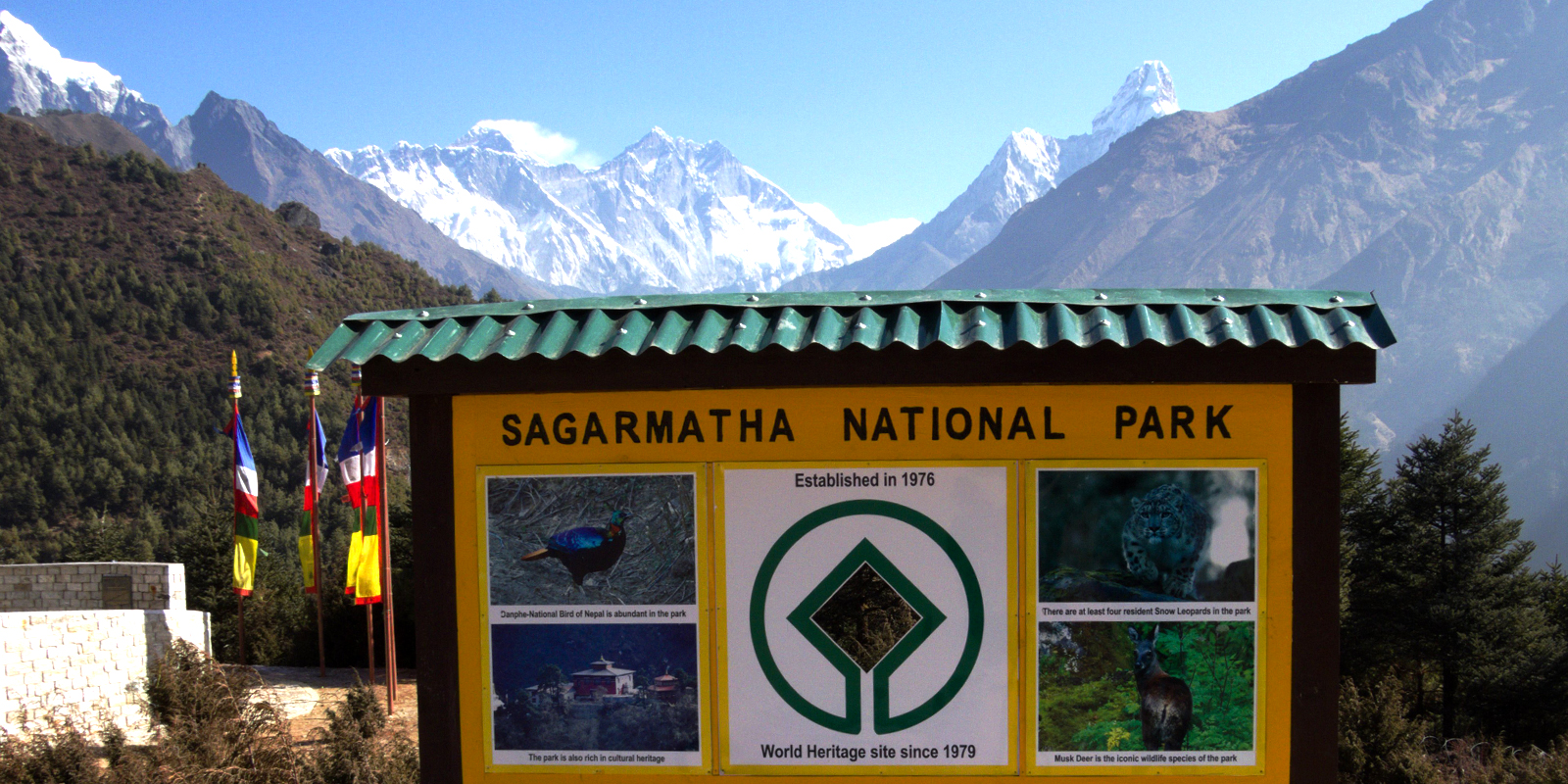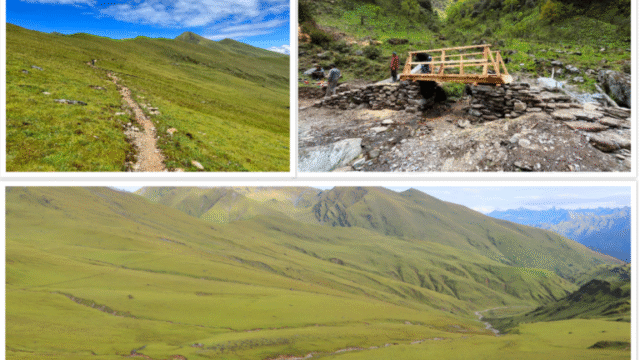Nestled in the northeastern part of Nepal, Sagarmatha National Park is a UNESCO World Heritage Site renowned for its breathtaking landscapes and unparalleled natural beauty. This iconic park, which encompasses the majestic Mount Everest, the highest peak in the world, offers an exceptional blend of adventure, nature, and culture, making it a must-visit destination for tourists from around the globe.
Sagarmatha National Park covers an area of 1,148 square kilometers and is characterized by its diverse terrain, which ranges from lush valleys and alpine meadows to snow-capped peaks and deep gorges. The park’s elevation varies from 2,845 meters to 8,848 meters above sea level, providing a wide range of ecosystems that support a rich variety of flora and fauna. The park is home to several of the world’s highest peaks, including Mount Everest, Lhotse, and Nuptse, as well as a range of glaciers, such as the Khumbu Glacier.
Attractions and Activities:
- Trekking and Mountaineering
One of the primary draws of Sagarmatha National Park is the Everest Base Camp Trek. This renowned trek offers a challenging yet rewarding journey through rugged terrain, traditional Sherpa villages, and stunning landscapes. The trek typically takes around 12 to 14 days, allowing visitors to acclimatize to the high altitudes and enjoy panoramic views of the Himalayas. For experienced climbers, summiting Mount Everest itself is the ultimate challenge, though it requires significant preparation, permits, and expert guidance. - Scenic Flights
For those who prefer a less strenuous way to experience the grandeur of Everest, scenic flights offer a breathtaking aerial view of the Himalayan range. These flights provide spectacular views of Everest, Lhotse, Makalu, and other surrounding peaks, offering an unforgettable experience for visitors. - Wildlife Viewing
Sagarmatha National Park is also a haven for wildlife enthusiasts. The park’s diverse habitats support various species, including the elusive snow leopard, red panda, Himalayan tahr, and several species of pheasants. Bird watchers can also spot a variety of high-altitude birds, such as the Himalayan griffon vulture and the alpine chough. - Cultural Experiences
The park is not just about natural beauty; it also offers rich cultural experiences. Visitors can explore the Sherpa culture through interactions with local communities, visit ancient monasteries, and learn about traditional lifestyles. The Tengboche Monastery, one of the most important Buddhist monasteries in the region, is a significant cultural site that provides insights into the spiritual practices of the Sherpa people.
Travel Guide:
- Best Time to Visit
The ideal times to visit Sagarmatha National Park are during the pre-monsoon season (March to May) and post-monsoon season (September to November). These periods offer the clearest skies and the most stable weather conditions, making it perfect for trekking and other outdoor activities. Winter and summer months are less favorable due to extreme temperatures and heavy rainfall. - Weather
The weather in Sagarmatha National Park varies greatly depending on altitude. Lower altitudes experience temperate climates, while higher altitudes face colder temperatures and snow. Visitors should be prepared for sudden weather changes and carry appropriate gear, including warm clothing, waterproofs, and high-altitude protection. - Duration
A typical Everest Base Camp Trek takes about 12 to 14 days, including acclimatization days. For a shorter visit, a 3 to 5-day trek to a viewpoint like Kala Patthar can provide stunning views of Everest and the surrounding peaks. - Travel Essentials
Travelers should secure necessary permits, including the Sagarmatha National Park entry permit and TIMS (Trekkers’ Information Management System) card. It’s advisable to travel with a reputable trekking agency, especially for those undertaking longer treks or climbing expeditions. Ensure proper acclimatization to avoid altitude sickness, and carry sufficient cash, as ATMs are rare in the region. - Accommodation and Food
Accommodation ranges from teahouses and lodges along trekking routes to more basic guesthouses. Food options include traditional Nepali dishes, as well as international cuisine in popular trekking areas. Be prepared for limited choices and basic amenities in higher altitudes. - Health and Safety:
Travelers should be in good health and physically prepared for trekking in high altitudes. It’s crucial to follow safety guidelines, use certified guides, and be aware of the symptoms of altitude sickness. Travel insurance that covers high-altitude trekking is highly recommended.
Sagarmatha National Park offers an unparalleled adventure for nature lovers, trekkers, and cultural enthusiasts. Its dramatic landscapes, rich biodiversity, and cultural heritage make it a prime destination for those seeking to experience the majesty of the Himalayas. Whether you’re scaling the heights of Mount Everest, trekking through breathtaking scenery, or immersing yourself in Sherpa culture, Sagarmatha National Park promises an unforgettable journey into one of the world’s most awe-inspiring natural wonders.






